Introduction:
Most sawists concentrate on the fabric, the thread and the machine adjustments, but overlook the fact that the needle is the heart of the performance of your sewing machine. The correct needle will make the necessary stitches easily, it will not damage its fabric, and will result in fewer thread breakages, the incorrect one may result in skipped stitching, puckering, and even machine damage.
As the future rolls on to 2025, needle manufacturing and various fabric trends will require sawists to know about the varying needles, size and methods of adjustment of needles to achieve better results. In this exhaustive guide you will be taken through:
Best sewing machine needles to use on various projects in 2025
Best advisable brands of needle
The procedure on how to fix and replace needles safely
Trouble shooting typical needle problems
At the end, you will be assured; confident in choosing which needles to work with and how to change them in order to refine your sewing accuracy as you work on bridal gowns, denim jackets, quilts, and delicate silks.
Kinds of sewing machine needles (2025 Updated)
These are some of the major needles in a nutshell:
1️{ messages per Needle
Just rounded tip, which is good to use on woven and knit fabric.
This thread is perfect to use as a daily-use cotton, polycotton/linen sewing thread.
Sizes: 70/10, 80/12, 90/14 (use per weight of the fabric).
Ballpoint / Stretch Needles
Round tip does not go through the fabric adding additional hold: it moves between the fibers.
Suitable only on jersey, spandex, lyre and knit fabrics.
Stops missing stitches on stretch material.
3️ crystalized/sharp needles
Narrow, fine like tip.
Great on silk, microfiber and taffeta with intricate top stitching.
4) Quilting Needles
Tapered so that it does not damage the fabric as it goes through the layers.
Welcomes piecing and quilting.
5. Denim/jeans Needles
Covering, solid shaft and point to reach deep layers.
Very suitable to denim, canvas and heavy twill.
6️_{reins Kropp setting weather reddit Sunday
Bigger eye to use embroidery threads.
A little rounded head to minimize friction and thread shedding.
7 IC Leather Needles
Clean cuts in leather and vinyl with triangular wedge point.
Apply only on non-woven, not to tear.
8. Twin Triple
Decorative stitching, knit hem finishing with a cover stitch appearance.
Comes in variable spacing and various sizes.
The best Needle Brands of Sewing Machine in 2025
In case you wish to have needles that are durable and provide cleaner outcomes, the following are the trusted brands to consider:
Schmitz The company provides a complete assortment of needles with high quality and color-coded.
Organ Needles These are standard, low priced and strong in nature used in industrial and household devices.
Singer Needles- Popular and can fit Singer machines.
Klassen Needles- its strength and its sharpness are consistent.
Janome Needles – This one is best suited to those who use Janome and require flawless compatibility.
Finding the Right Needle to Use on Your How-to (2025)
The following is a quick matching list:
Type of fabric Recommended needle
Cotton, Linen Universal 80/12
Silk, Chiffon Microtext 60/8 or 70/10
Denim, Canvas Denim 90 / 14 or 100 / 16
Knit, Jersey Ballpoint 75/11
Stretch Fabrics Stretch Needle 75/11
Quilting Layers Quilting needle 90/14
Leather, Vinyl Leather Needle 90/14
Embroidery Embroidery Needle 75/11
Never cross-select needle sizes and weight of fabrics:
Lightweight fabric => Smaller needle (60 /8, 70/10)
Medium material 200 500 27 mart 42 30 g / mm
Heavy → Big needle (100/16, 110/18)
How Frequently do you swap sewing machine needles?
Specialists suggest that one changes needles every 8-10 hours of sewing or at the beginning of every new work, especially in case of working in different types of fabric. As a needle with a blunt point will not be seen, it can produce:
Skipped stitches
Puckering
Fabric damage
Machine stitch needles clog up
Step-by-step:
Adjusting and Changing Sewing Machine Needles Needle changing is also simple though one has to be keen, as most of the time needles can frustrate their machines or cause injuries to the individual. What you will need:
Tiny screwdriver (It might be coming with your machine) A scrap of paper or a piece of a cloth in case the needle falls The first step is shutting down the machine. Safety first. Once you want to change the needle always make sure you switch off your machine and unplug it
. Step 2:
Adjust the Needle to the Topmost Place Turn the handwheel to take the needle up as high as possible so it should be easy to remove.
Step 3:
When Needle Clamp Screw is Loose Apply some finger pressure to the needle as you turn the needle clamp screw anti-clockwise with fingers or screwdriver as your machine permits.
Step 4:
Take out the Old Needle Gently jerk the needle off and out.
Step 5:
Put in New Needle Make sure the flat side of the needle is prerequisite direction (generally backs on most of the machines). Force the needle into the clamp to its limit to be able to fit right.
Step 6:
Screw the Needle Clamp Insert the needle in a tight yet not tight way.
Step 7: Scrap Test
Indicators That Your Needle Has To Be Changed Be on the lookout of the following signs: Crackling or cracking when stitching Skipped stitches, irregular ones Jerking or dragging of cloth Menacing thread fraying or breaking all too often Apparent curvature or blunting of the needle point When you detect any of them, change the needle.
Fixing The Needle Problems
Missing Stitches: Make sure the needle is properly installed, should have the proper type that is used on your fabric and they should be changed when they bend.
Thread Breaking: Always use a proper sized needle to the thickness of the thread.
Fabric Puckering: The puckering on the fabric can be eliminated by either using a smaller needle or one with a ballpoint.
Needle Breakage: Avoid going slow when sewing through thick seams, there should be no contact between the needle and the presser foot, and the needle should be of the right size that will fit the fabric.
Best Practice of Needle Storage (2025)
Keep unused needles in their labeled cases which enable them to be quickly recognized by their types and sizes.
Exposure to moisture is a bad idea which can cause rusting.
Write a diary of the time you use needles to keep track of when to replace them in case you use needles regularly.
Future Trends-Needles in 2025
In 2025 manufacturers are concentrating on:
Titanium-coated needles are longer lasting
Environment friendly packaging of needles
Needles of special high-speed machine
Smart needle packages will have QR codes related to the compatibility manual
These trends allow you to keep barest of things in order to keep your sewing both efficient and your projects possessing a professional appearance.
FAQs: Needles of Sewing Machine (2025)
Q: Can I take any needle to any sewing machine?
A: The common 130/705 H system is the domestic standard used on most machines but refer to manual always to be on the safe side.
Q: My new needle always breaks, why?
A: It could be the case of the wrong size being used or failure to insert it properly, or by hitting a hard object during sewing.
Q: can sewing machine needles be sharpened?
A: No, you should replace the needles when they get worn out to extend the quality of their stitches and the health of the machines.
Q: How does a ballpoint differ with a stretch needle?
A: They both have rounded tips, yet stretch needles have a special scarf and eye to avoid missing a stitch on an elastic cloth.
Sub conclusion:
Pay Up on Good Needles to Sew Perfectly Selecting, and maintaining proper sewing machine needle is critical to clean stitching, protection of garment and sewing machine durability. Knowing the types, sizes, and how to get the correct adjustment, helps you to cut time, frustration and improve your sewing result whether you are sewing bridal gowns, quilting, or doing daily wear sewing challenges.
By 2025, you will only be so good a sew as the needle you use.
Spare time to: Learn to use the suitable needle per cloth Frequently switch needles Change the needles frequently Get to know the techniques of adjustments properly in order to experience an easy, professional, and fun sewing each time.
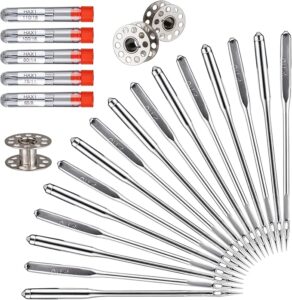
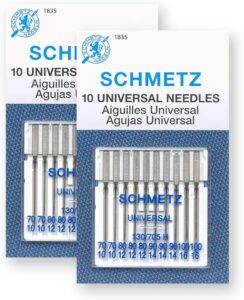
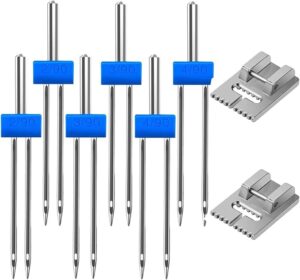
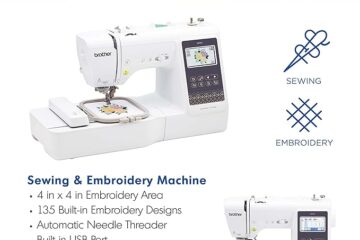
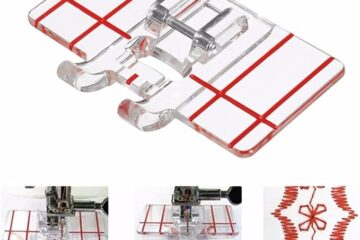
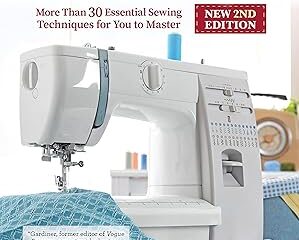
0 Comments